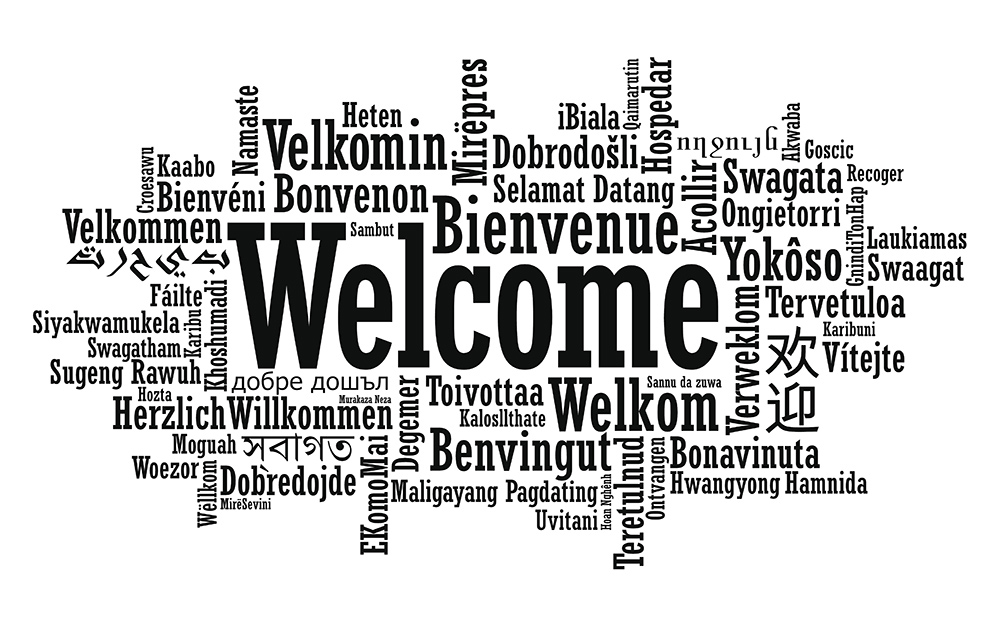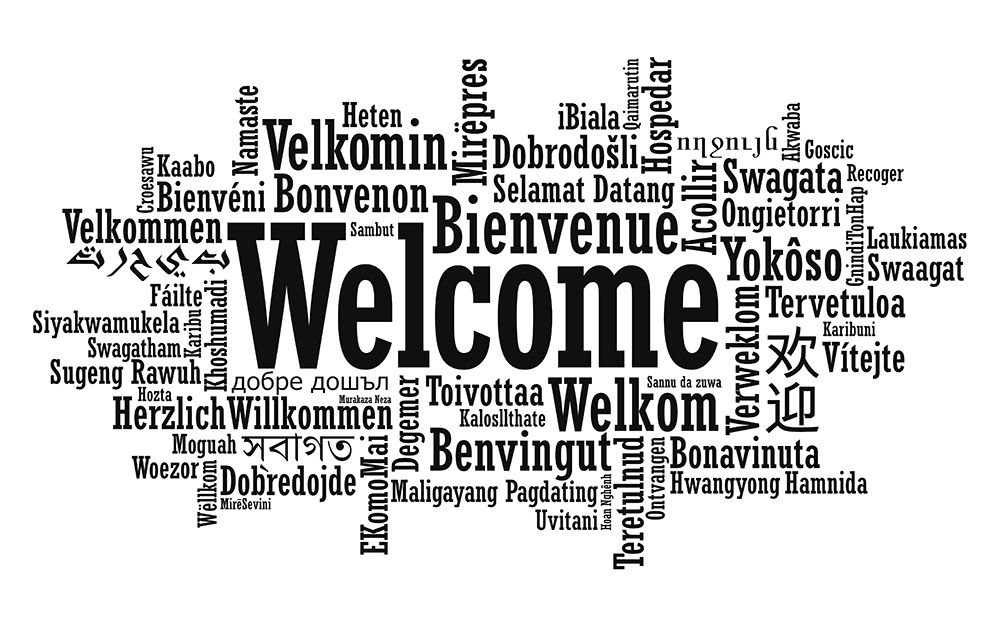互联网不能只让英语统治,必须改变商业模式

1994年,互联网标准诞生,如今我们所知的网络初具雏形。两年后,多语言网络出现,提出了“让万维网成为真正的世界性网络!”(Making the World Wide Web world wide!)的口号。尽管万维网早早提出了这样的愿景和承诺,但如今,英语依然是互联网世界的主流语言,60%的网络内容都是英语内容。更加令人难以置信的是,虽然绝大多数的新网民来自印度、中国等非英语国家,英语内容的占比却仍然在不断上升。造成这一差异的主要原因是什么?是网络经济的扭曲本质。
实际使用某种语言的人数和网络上该语言内容的数量(以网页数量计)之间往往存在令人震惊的巨大差距。就拿两个位于世界两端的国家来说:印地语是使用人数最多的五种语言之一,全球共有5亿人使用印地语,但互联网上的印地语内容只占不到0.1%;而西班牙语同样也是约5亿人日常使用的语言,西班牙语内容在互联网上却只占约4%。
在开放自由的互联网上,非英语网站的匮乏是数字经济不发达的有力证明。在中国,中文网络创意经济仍然在蓬勃发展。中文网络内容与其他语言网络内容截然不同的境况很好地提醒了我们,发展非英语网络内容是可行的。中文网页的数量(约占全球总数的1.4%)并不能够完全体现中文网络内容的成功。中国还有融合了电商功能的独特社交平台,包括文字图片社交平台(比如微博)和视频流社交平台(例如抖音)。
而在世界其他地方,网络尽管开放,在线内容却根本无法反映国家和民族语言的多样性。这其中的一大原因在于,互联网世界的经济引擎大多是由英语公司主导的。
自1994年10月第一支互联网广告播出以来,广告收入一直是在线内容的主要资金来源。据eMarketer数据显示,Facebook、谷歌和亚马逊三大巨头占据了70%的数字广告市场,而且它们的市场份额还在不断增长。剩下的市场份额甚至无法让英语数字媒体繁荣发展。对于其他语言内容而言,这个问题似乎是无解的。大型科技公司和英语牢牢霸占了大部分广告支出,使用其他语言的创作者面临着它们的双重打击。数据明确反映了这一事实:印度语言有几亿人使用,印度语言网站上的广告却非常少,相关分析报告甚至不会把这当成一类广告来分析。我们应当重视这种忽视其他语言的倾向,因为这不仅强化了英语的文化主导地位,还成为了阻碍几亿人获取信息和知识的重大障碍。
然而,非英语创作者也不必太过悲观。首先,过去几年间,数百万创作者(包括个人和小团队,而不仅仅只是大公司)在社交媒体上培养了庞大的受众群体。据估计,仅Instagram上就有2亿人拥有超过10万名粉丝。其次,社交媒体和即时消息天生就有多语言的特点。Facebook证明了这点:作为一个主打用户原创内容(UGC)的免费网站,Facebook比开放网络更加全球化,网站上每年都会出现用110种语言写成的几百万帖子。最后,过去一年里,解决问题的第三个有利因素浮出了水面,即无缝数字支付的快速普及。在智能手机的帮助下,人们只要轻轻一点就可以用苹果、谷歌甚至Facebook进行支付。在印度,即时通讯平台WhatsApp使用了银行间小额支付统一接口UPI,可以实现最低15美分的交易。
在中国,移动支付、本地语言内容和粉丝量巨大的独立创作者汇集在一起,创造了一个价值数十亿美元的产业。第一波成功的浪潮出现在知识付费领域,形形色色的内容和服务如今已经形成了一个用户量级高达数亿的庞大市场。用户能够在微博上访问KOL的个人主页,向KOL提问,并付费查看答案。专业问答平台知乎就像付费版的Quora,用户可以付费请专家回答问题。喜马拉雅FM、得到、蜻蜓等音频平台蓬勃发展,为用户提供各种免费和付费节目。自助类图书则成为了畅销书排行榜的常客。与中国相比,这种知识付费平台在美国尚属新鲜事物,但随着支付简便程度提高,此类平台正在迅速发展壮大,如Patreon、Cameo、Substack和ScrollStack(我的公司)。
新冠疫情和传媒行业持续不断的危机也加快了全新付费网络的崛起。随着创作者直接向粉丝收费变得更加容易,市场将发生巨大的变化。只要有能力向哪怕一小部分粉丝收取少量费用,更多创作者就有望仰仗他们的创造力谋生。
旧日的互联网世界是为“向难以想象的庞大受众群体传播超级定向广告”设计的,创作者在其中一直处于次要地位。对于非英语创作者而言,那个世界甚至更加糟糕。而如今,移动支付在互联网上像数字广告一样普及,创意经济也将随之发生改变。使用各种语言的作家、播客、音视频创作者和各类艺术家,都能够向世界各地的粉丝收费。
这些看似微不足道的受众群体支持创造性工作的能力,可能会催生一个充满语言创新的世界。有史以来第一次,泰米尔语诗人可以在世界各地读者的支持下,出版新的诗集;西班牙播客创作者或许能够从他的私人社群获得支持。万维网终将实现最初的雄心壮志,成为一个真正的全球创意市场。
萨米尔·帕蒂尔(Samir Patil)是ScrollStack.com的联合创始人及首席执行官。ScrollStack.com是一个以移动网络为主的多语言平台,允许创作者为他们的作品收费。(财富中文网)
译者:钱功毅

1994年,互联网标准诞生,如今我们所知的网络初具雏形。两年后,多语言网络出现,提出了“让万维网成为真正的世界性网络!”(Making the World Wide Web world wide!)的口号。尽管万维网早早提出了这样的愿景和承诺,但如今,英语依然是互联网世界的主流语言,60%的网络内容都是英语内容。更加令人难以置信的是,虽然绝大多数的新网民来自印度、中国等非英语国家,英语内容的占比却仍然在不断上升。造成这一差异的主要原因是什么?是网络经济的扭曲本质。
实际使用某种语言的人数和网络上该语言内容的数量(以网页数量计)之间往往存在令人震惊的巨大差距。就拿两个位于世界两端的国家来说:印地语是使用人数最多的五种语言之一,全球共有5亿人使用印地语,但互联网上的印地语内容只占不到0.1%;而西班牙语同样也是约5亿人日常使用的语言,西班牙语内容在互联网上却只占约4%。
在开放自由的互联网上,非英语网站的匮乏是数字经济不发达的有力证明。在中国,中文网络创意经济仍然在蓬勃发展。中文网络内容与其他语言网络内容截然不同的境况很好地提醒了我们,发展非英语网络内容是可行的。中文网页的数量(约占全球总数的1.4%)并不能够完全体现中文网络内容的成功。中国还有融合了电商功能的独特社交平台,包括文字图片社交平台(比如微博)和视频流社交平台(例如抖音)。
而在世界其他地方,网络尽管开放,在线内容却根本无法反映国家和民族语言的多样性。这其中的一大原因在于,互联网世界的经济引擎大多是由英语公司主导的。
自1994年10月第一支互联网广告播出以来,广告收入一直是在线内容的主要资金来源。据eMarketer数据显示,Facebook、谷歌和亚马逊三大巨头占据了70%的数字广告市场,而且它们的市场份额还在不断增长。剩下的市场份额甚至无法让英语数字媒体繁荣发展。对于其他语言内容而言,这个问题似乎是无解的。大型科技公司和英语牢牢霸占了大部分广告支出,使用其他语言的创作者面临着它们的双重打击。数据明确反映了这一事实:印度语言有几亿人使用,印度语言网站上的广告却非常少,相关分析报告甚至不会把这当成一类广告来分析。我们应当重视这种忽视其他语言的倾向,因为这不仅强化了英语的文化主导地位,还成为了阻碍几亿人获取信息和知识的重大障碍。
然而,非英语创作者也不必太过悲观。首先,过去几年间,数百万创作者(包括个人和小团队,而不仅仅只是大公司)在社交媒体上培养了庞大的受众群体。据估计,仅Instagram上就有2亿人拥有超过10万名粉丝。其次,社交媒体和即时消息天生就有多语言的特点。Facebook证明了这点:作为一个主打用户原创内容(UGC)的免费网站,Facebook比开放网络更加全球化,网站上每年都会出现用110种语言写成的几百万帖子。最后,过去一年里,解决问题的第三个有利因素浮出了水面,即无缝数字支付的快速普及。在智能手机的帮助下,人们只要轻轻一点就可以用苹果、谷歌甚至Facebook进行支付。在印度,即时通讯平台WhatsApp使用了银行间小额支付统一接口UPI,可以实现最低15美分的交易。
在中国,移动支付、本地语言内容和粉丝量巨大的独立创作者汇集在一起,创造了一个价值数十亿美元的产业。第一波成功的浪潮出现在知识付费领域,形形色色的内容和服务如今已经形成了一个用户量级高达数亿的庞大市场。用户能够在微博上访问KOL的个人主页,向KOL提问,并付费查看答案。专业问答平台知乎就像付费版的Quora,用户可以付费请专家回答问题。喜马拉雅FM、得到、蜻蜓等音频平台蓬勃发展,为用户提供各种免费和付费节目。自助类图书则成为了畅销书排行榜的常客。与中国相比,这种知识付费平台在美国尚属新鲜事物,但随着支付简便程度提高,此类平台正在迅速发展壮大,如Patreon、Cameo、Substack和ScrollStack(我的公司)。
新冠疫情和传媒行业持续不断的危机也加快了全新付费网络的崛起。随着创作者直接向粉丝收费变得更加容易,市场将发生巨大的变化。只要有能力向哪怕一小部分粉丝收取少量费用,更多创作者就有望仰仗他们的创造力谋生。
旧日的互联网世界是为“向难以想象的庞大受众群体传播超级定向广告”设计的,创作者在其中一直处于次要地位。对于非英语创作者而言,那个世界甚至更加糟糕。而如今,移动支付在互联网上像数字广告一样普及,创意经济也将随之发生改变。使用各种语言的作家、播客、音视频创作者和各类艺术家,都能够向世界各地的粉丝收费。
这些看似微不足道的受众群体支持创造性工作的能力,可能会催生一个充满语言创新的世界。有史以来第一次,泰米尔语诗人可以在世界各地读者的支持下,出版新的诗集;西班牙播客创作者或许能够从他的私人社群获得支持。万维网终将实现最初的雄心壮志,成为一个真正的全球创意市场。
萨米尔·帕蒂尔(Samir Patil)是ScrollStack.com的联合创始人及首席执行官。ScrollStack.com是一个以移动网络为主的多语言平台,允许创作者为他们的作品收费。(财富中文网)
译者:钱功毅
The multilingual web emerged within two years of the birth of the standards in 1994 that created the web as we know it. The motto of the internationalization task force was “Making the World Wide Web world wide!” But despite that early vision and commitment, today English is the dominant language of the Internet. It accounts for about 60% of all web content, and incredibly, this percentage is growing despite the fact that a vast majority of new Internet users are from non–English-speaking countries like India and China. The main reason for this disparity? It’s the skewed nature of the economics of the web.
The wide gap between the number of speakers of a language and the volume of online content (measured by number of web pages) is shocking. To take just two examples from opposite ends of the world: Hindi, spoken by half a billion individuals and among the top five spoken languages in the world, constitutes less than 0.1% of Internet content. And Spanish, which also has about half a billion speakers in real life, accounts for just about 4% of websites.
The lack of non–English-language websites on the open Internet is a strong proxy for an underdeveloped digital economy. The fact that the Chinese online creative economy is thriving, is a good reminder of what is possible and a counterfactual to what has happened to other languages. Chinese web pages (about 1.4% of the global total) do not fully measure the true success of the language because of the country’s unique e-commerce–enabled social platforms—especially in messaging (e.g., Weibo) and video-streaming (e.g., Douyin).
In the rest of the world, where the open web does matter, online content simply does not reflect the linguistic diversity of nations and people. The problem is that the web’s economic engine is dominated by English-language companies.
Since the first Internet ad ran in October 1994, advertising revenue has been the dominant source of funding for content online. The share of digital advertising that belongs to the Big Three—Facebook, Google, and Amazon—is now 70% and still growing, according to eMarketer. With what is left over, not even the English-language digital media can thrive. For other languages, the problem seems insurmountable; creators working in these languages face the double whammy of Big Tech and English-language dominance of the ad spending. The numbers are stark: For example, advertising on sites in Indian languages that are spoken by hundreds of millions of people is so small that it does not even register as a category in any analyst reports. This neglect faced by other languages is significant not merely because it reinforces the cultural dominance of English, but also because it represents a consequential hurdle to accessing information and knowledge for hundreds of millions of people.
However, creators working in languages other than English do have reasons to be optimistic. First, over the past few years, millions of creators—individuals and small teams, not just big companies—have built large audiences on social media. On Instagram alone an estimated 200 million have more than 100,000 followers each. Second, social media and messaging are inherently multilingual. We have evidence of this from Facebook, which, because it is free and features user-generated content, is far more global than the open web, generating millions of posts yearly in more than 110 languages. And finally, over the past year, a third piece of the puzzle has fallen into place—the rapid adoption of seamless digital payments. Thanks to smartphones, all one needs is a tap to make payments using Apple or Google, and now even Facebook. In India, the messaging platform WhatsApp, using UPI—a standard for bank-to-bank micropayments—now enables payments as low as 15 cents.
In China, this trifecta of mobile payments, local-language content, and independent creators with huge followerships has created a multibillion-dollar industry. The first wave of success is in the pay-for-knowledge economy, with a diverse set of content and services marketplaces now at the scale of hundreds of millions of users. On the Weibo messaging service, users can pose questions to influencers through their profile pages—and offer cash for answers. There is the specialized platform Zhihu, where users can pay experts a fee to answer their questions, like a paid Quora. There is a boom in audio platforms that host and distribute a broad mix of free and paid programs, including Ximalaya FM, Dedao, and Dragonfly. Self-help often dominates the top-seller lists. Compared with China’s, such “passion economy” platforms are new in the U.S., but they’re expanding quickly as payment friction declines. Services like Patreon, Cameo, Substack, and ScrollStack (my company) are growing fast.
The pandemic and continuing crises in the media business are accelerating the emergence of the new paid web. As it becomes easier for creators to directly charge their fans, the consequences are far-reaching. If they are able to charge a small amount of money to even a fraction of their fans, more creators could earn a living from their creative endeavors.
On the old web, designed to deliver hyper-targeted ads to unimaginably large audiences, creators have been a sideshow. This world was disproportionately worse for those working in non-English languages. As payments evolve to be as common on the Internet as digital ads, they will transform the creative economy. Writers, podcasters, storytellers in audio and video, and artists of all kinds, working in any language, can charge their fans around the world.
The ability to sustain creative work from these micro-size audiences is likely to spark a world of linguistic innovations. For the first time, a Tamil poet will be able to tap her followers worldwide to launch a new collection. And a Spanish podcaster might sustain his efforts from the neighborhood he knows personally. The World Wide Web will then finally be able to realize its original ambition of being a truly global marketplace for ideas.
Samir Patil is the cofounder and CEO of ScrollStack.com, a mobile-first, multilingual platform that enables creators to charge for their works.













